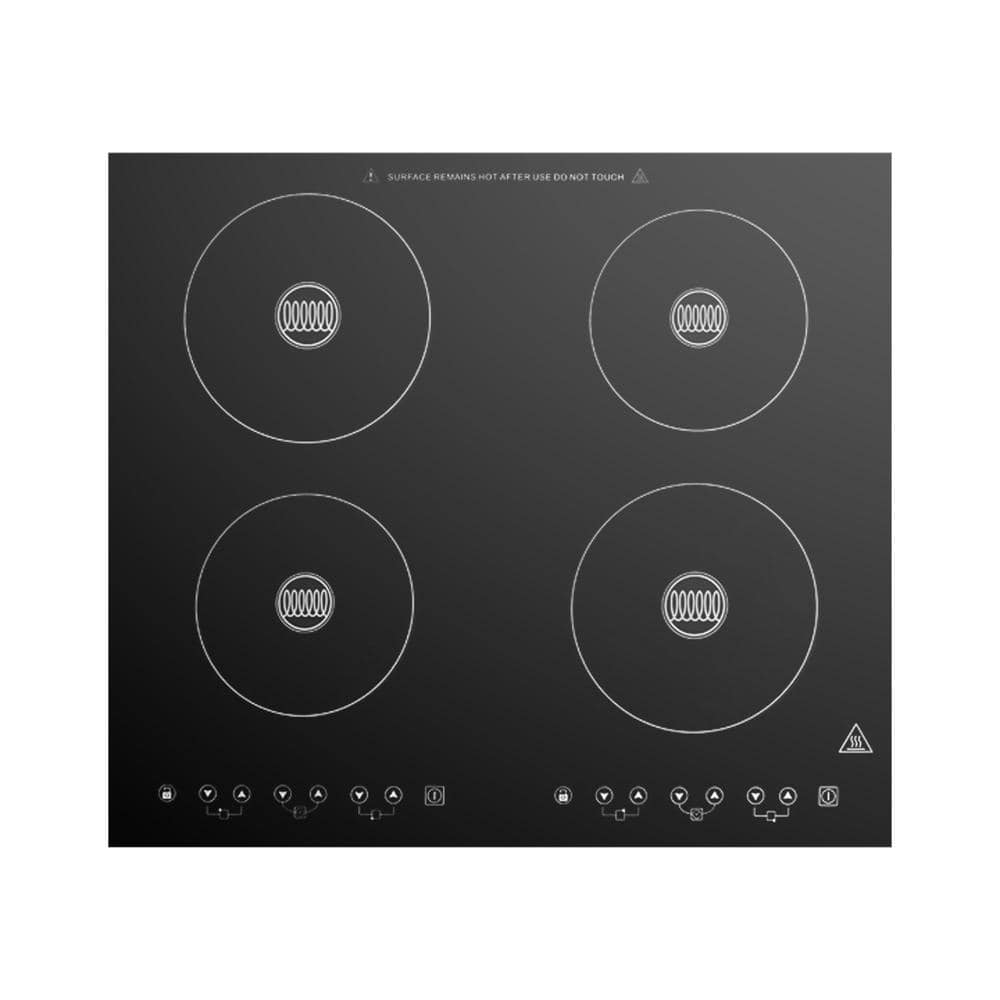Gas vs. Electric Stoves: Which Is Best?

Published May 31, 2024
If you think of your kitchen as a recipe, one of its most important ingredients would be the range. A kitchen range combines the stove, also known as a cooktop, and the oven. Whether you’re choosing a new range or a stand-alone cooktop or oven, you must think about how the appliance will be fueled. For cooking, the question is gas stove vs. electric stove?
This guide will introduce you to both gas and electric stoves, comparing their characteristics and uses for an informed decision when you’re ready to make a choice.
Table of Contents
What Is a Gas Stove and How Does It Work?
What Is an Electric Stove and How Does It Work?
Induction Stoves
Heat Control and Cooking Performance
Energy Efficiency
Safety
What Is a Gas Stove and How Does It Work?

Gas ranges are typically powered by natural gas and must be hooked up to a gas line. Sometimes they have electric parts, such as digital clocks or timers, and need to be plugged into an outlet too.
How does a gas stove work?
At the most basic level, your home’s gas line is connected to the stove, supplying it with gas. The knobs on the stove control the opening of the gas valves, letting in the fuel from the gas line to each burner they control. In many stoves, you have to push the knob before turning it, creating a two-step process to reduce accidents.
Once the gas is released from the burner, it’s ignited, creating an open flame that heats up cookware placed on it. Ignition methods vary, depending on the stove. The knob’s function after ignition is to control the size of the flame or turn it off.
What Is an Electric Stove and How Does It Work?

How does an electric stove work?
Electric ranges use electricity to heat their burner elements. They are connected to electricity by being plugged into a standard electrical outlet. Knobs control individual burners, allowing them to heat up to the number or level on the knob. The heat of the burner is transferred to the cookware.
On a coiled cooktop, the metal spiral of the burner is located slightly above the cooktop’s surface. Radiant models have flat tops, with the heating element found underneath the smooth, glass surface of each burner.
Induction Stoves

An induction range is a type of electric stove, but it works differently than a traditional one. To start with, it needs to be plugged into a 240-volt outlet on its own circuit.
An induction cooktop is flat and has a ceramic surface. It uses electromagnetic energy to heat up the burners. When used with magnetic induction cookware, an induction cooktop offers quick heat that’s transferred directly to pots and pans. Though the cookware gets hot, the stove itself and the burners stay cool during the cooking process.
Since an induction stove produces less heat, it also keeps a kitchen cooler than a gas or electric stove.
For cookware to work correctly on an induction burner, it must be compatible with the magnetic heating process. Cast iron, enameled iron and some stainless-steel items work well. Cookware made of aluminum, glass and copper won’t work with induction stoves. Neither will some stainless-steel pots and pans.
Heat Control and Cooking Performance

Gas burners heat up cookware more quickly than electric ones. Fans of gas stoves like how fast burners turn on and that cooking immediately stops when the flame is turned off. The knobs on gas stoves allow users to adjust the size of the flame, so heat control is precise and instantly responsive as a result. On the cooktop, the instantaneous response of gas ranges means that temperature changes when you’re cooking are quick.
Traditional electric ranges take time for temperature changes controlled by the knobs to affect the cookware and food.
Induction electric ranges are just as responsive as gas ranges.
As far as how well each type cooks using various methods, while electric tends to outperform gas, it mostly depends on the specific model. There are higher and lower performing models for each type of stove and for gas vs. electric ovens.
Energy Efficiency

Whether or not a stove is energy efficient depends on how that’s defined. Electricity requires more energy to produce and then direct it to your home and stove. Defined this way, a gas stove is more efficient if it doesn’t use any electricity.
On the other hand, when considering energy transference to food, gas wastes more energy than electric. Much of the energy is wasted by simply going into the air. With this definition, electric is more energy efficient.
Induction stoves, however, are the most energy-efficient by any definition. Most significantly, almost all their energy is transferred to food as it cooks. Since they produce less heat on the cooktop and in the oven, induction ranges keep kitchens cooler when comparing induction vs. gas vs. electric ovens.
Safety

The debate between gas vs. electric stoves is clearer when it comes to safety, but no matter the type of stove you have, be sure to keep fire extinguishers in the kitchen or nearby.
Gas stoves:
Gas stoves are generally considered less safe. They need to be in well-ventilated areas because they emit gases, including nitrogen dioxide, benzene, carbon monoxide and carbon dioxide. These gases can negatively affect the health of anyone in the home.
If something like a piece of food or a paper towel falls into the flame of the burner while it’s on, a fire can start.
If the stove is turned on, but the burner is not ignited, natural gas, which is flammable, can leak into the room. Gas leaks may also be caused when the pilot light of a gas oven goes out. Gas stove should be examined closely on a regular basis to make sure they stay in good working order.
Safety tip: If your home has gas appliances or uses gas heat, you should install carbon monoxide detectors. Gas ranges should only be used for cooking and baking and never as a way to heat a home.
Electric stoves (traditional and induction):
You can’t always see that a burner is on, so there are risks of accidentally touching a hot burner on a traditional electric cooktop.
The burners on a traditional electric stove can stay very hot after they're turned off, and it can be hard to tell. Touching them can cause burns.
If flammable items like dish towels or curtains get too close to hot burners, it’s possible that a fire may start.
Electric induction cooktops are the safest since the burners aren’t hot. They may be a better choice for households with children, since there’s no hot cooking element that can result in accidental burns.
Installation and Maintenance

Electric (including induction):
Installing electric stoves requires an electrical outlet that supplies 220 to 240 volts. Many homes are already equipped with outlets, so installation is usually straightforward.
Since many electric stoves have flat, smooth burners, they’re easier to clean than gas stoves. However, the surface can be more easily scratched during cleaning and everyday cooking tasks.
Coil cooktop burners are more difficult to clean, similar to the burners on gas stoves. On the other hand, the coils are durable, so you don’t have to worry about damaging them while scrubbing.
Any ventilation hoods will need to be maintained.
Gas stoves:
Installation of gas stoves requires a connection to the gas line. You may already have a gas supply line, but if not, that will need to be installed as well.
As far as cleaning, gas stoves have burners with grates and holes. The way the burners on a gas stove work can make them harder to clean. Bits of food can get caught in the nozzles, which can affect the way gas flows to the burner. The grates have to be removed, and the clogged holes need to be handled, so cleaning isn’t straightforward.
They also have hoods and fans for ventilation that need regular maintenance.
Cost

Electricity can cost more than natural gas when comparing the rates, so an electric stove may cost more to operate. However, the cost of the electric range itself is often less than a similar gas-powered one.
Gas stoves can cost less to operate, but the gas hookup means an additional household utility bill.
Though induction stoves are more energy efficient than gas and electric stoves, they are also among the costliest cooking appliances.
Making the Decision: Gas or Electric Stove?

When you’re deciding between a gas vs. electric oven or stove, you may be limited by whether or not your kitchen has a gas hookup, a regular household outlet or a dedicated 240-volt circuit. Other factors include cost of the appliance, as well as how much it costs to operate and how easy it is to clean. Of course, safety considerations are another key concern for both gas or electric stovetops.
Choosing between gas and electric, including electric induction, really comes down to personal preference. Various models can offset any disadvantages of the type of appliance. Also, how the food cooks in either one can affect individual preferences.
As your interest in gas vs. electric stoves heats up, you can find the kitchen appliances you want at The Home Depot, which delivers online orders when and where you need them.





































